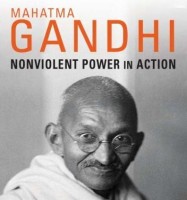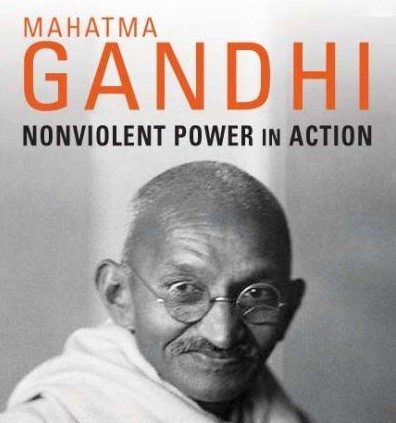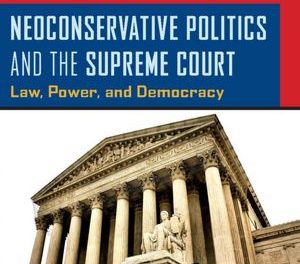 Book Review: Mahatma Gandhi: Nonviolent Power in Action
Book Review: Mahatma Gandhi: Nonviolent Power in Action
Author: Dennis Dalton
Publisher: Columbia University Press – 311 pages
Book Review by: Paiso Jamakar
Some of the unique characteristics of this book – compared to other books on Mohandas
Gandhi – that other reviewers point out are: criticism of his ideas and methods by other
prominent Indian leaders; doubts that the Mahatma (“Great Soul”) placed in British
leaders’ minds about the legitimacy of their actions in colonial India; and demonstrations
of Gandhi’s philosophy through the clever steps he took in exposing British cruelty –
against innocent Indian civilians – to the world and winning freedom for India.
So, before you say to yourself “Oh yet another book on Gandhi,” this one has the above
distinctions, plus it is very authoritative and fact-based. And, Dennis Dalton really knows
what he is writing about. He is a student of Indian history, author of the book Indian
Idea of Freedom: Political Thought of Swami Vivekananda, Aurobindo Ghose, Mahatma
Gandhi and Rabindranath Tagore; and editor of Mahatma Gandhi: Selected Political
Writings.
The author was the Ann Whitney Olin Professor of Political Science and is now professor
emeritus at Barnard College.
The book has six chapters and a conclusion. The chapters relate to respectively to:
Gandhi’s development of his early ideas from 1896 to 1917; Gandhi’s effective, results-
focused style of leadership (e.g. satyagraha); how he handled public criticism; civil
disobedience in action; the Calcutta Fast and its outcome; and a comparison and contrast
of Mohandas Gandhi, Malcolm X and Martin Luther King.
The first chapter covers Gandhi’s ideas of satyagraha (non-violent civil disobedience)
and swaraj (self-rule) when he was studying and living in South Africa. The two ideas
are closely related in the sense of means and ends. Non-violence was Gandhi’s means
towards self-rule or independence from the British for Indians.
Gandhi, described by the author as more of an activist and social reformer than a theorist-
philosopher was dismayed at how his compatriots were treated, he wrote the pamphlet
Grievances of British Indians in South Africa.
Gandhi is quoted, in expounding on his idea of satyagraha as saying: “Our method in
South Africa is to conquer this hatred by love…we do not attempt to have individuals
punished, but, as a rule, patiently suffer wrongs at their hands.”
He did not like to use the term ‘passive resistance’ that had been coined by someone else.
Instead he used a term related to the Hindu faith – ahimsa – which not only signified non-
violence but also love and charity.
In the second chapter, Dennis Dalton discusses the period from 1920 onwards, by
which time Gandhi had developed enough confidence in his method of non-violent civil
disobedience to achieve his goal of an independent India.
Dennis Dalton relates an historic event in the independence movement that occurred on
September 4th of that year. On that day, before a special session of the Indian Congress
in Calcutta, Gandhi presented his Resolution on Non-cooperation. The author writes that
it “signified more than just another Congress attempt at redress of grievances. It meant
open rebellion.”
The third chapter describes criticism of Gandhi’s methods by various people, among
them the Nobel Prize-winning poet Rabindranath Tagore, the theorist M.N. Roy, the
leader of the Untouchables (members of the lowest caste in India) Dr. B.R. Ambedkar,
and the writer Nirad Chaudhuri.
Dr. Ambedkar was particularly harsh in his criticism of Gandhi: “Few knew what
tragedies the Untouchables as well as the country have had to go through on account of
the illusions of Mr. Gandhi.”
Whereas Nirad Chaudhuri charged that Gandhi “was preaching the rejection of not
only European civilization, but of Hindu civilization as well…it appeared to me that his
entire ideology was driven by a resolve to abandon civilized life and revert to primitive
existence.”
Chapters 4 and 5 provide interesting reading on two important milestones in the path to
independence in India. One is the well-known Salt March and the other is the Calcutta
Fast.
The first historic event began on March 12, 1930, when Gandhi, then 60 years old, took
78 followers from his ashram in Sabarmati to shores of Dandi, about 200 miles away.
Gandhi and his followers collected the salt on April 6th, a violation of the British law.
This was not just an act of civil obedience by more a protest against the onerous tax on
salt that the British colonial rulers imposed in 1882 in order to control its production and
distribution. Thousands of others followed Gandhi with salt marches throughout India.
Gandhi was arrested a month later on May 5th. But the British Raj soon realized that more
such actions will ensure.
The authority of the British Viceroy of India had been challenged and from then on,
especially with Gandhi now in jail, the colonial rulers realized that their power and
influence was on the wane, eventually resulting in the “Quit India” movement just before
being forced to leave en masse and restore power to Indians.
But months before that joyful day of independence, India was torn in strife with violence
between Hindus and Muslims. The Muslims wanted their own country, on the day of
independence, to be named Pakistan. Gandhi felt that he would not have achieved full
success if violence continued. It is then that Gandhi fasted in Calcutta, while the city was
torn in riots, to broadcast the message to the masses that violence must stop.
As we wrote earlier, this is not only a well-documented book, it also has a lot of insight,
enabling the reader to not only know the facts relating to the who, what, when where and
how about India’s struggle for independence, but also the why. An excellent book by
Dennis Dalton.







